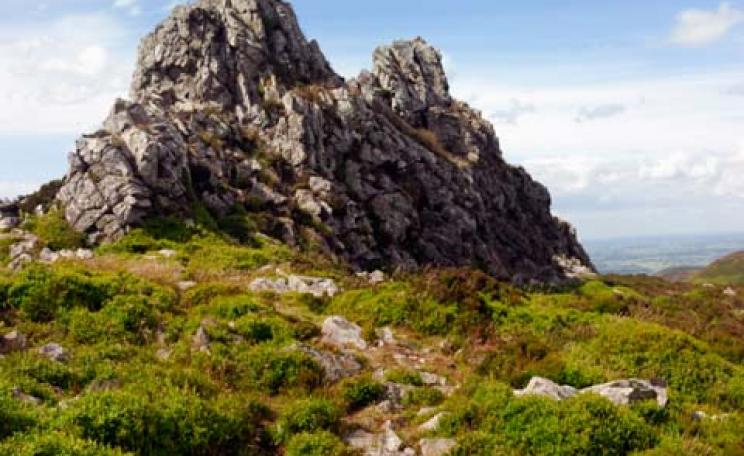Watching these small bundles of feather and flesh diving above London, the vastness of the planet seems to open up again.
I wandered up Parliament Hill last week, at dusk. Having spent most of lockdown in the countryside, with the privileged access to green space that comes with rural living, the transition to London was a greyish prospect.
The city seems an unlikely hotspot for nature, something that has been increasingly important for my mental health during the pandemic. But looking up from Hampstead Heath, the pastel sky was absolutely teeming with birds on the wing.
I’m no seasoned twitcher – this is the first year I’ve been able to distinguish one bird from another (and I’m still struggling to make sense of the grey and brown). But I can now recognise some of the more famous migratory birds – swifts and swallows – standing out because of their forked tails and balletic flight.
Threats
Lockdown has drastically shrunk our worlds, ushering in an insularity to life and a temporary halt to global travel. But these migratory birds have defied travel bans, flying thousands of miles from Africa to summer here, as they do every year.
Watching these small bundles of feather and flesh diving above London, the vastness of the planet seems to open up again.
Nonetheless, species like swifts are threatened by a clutch of hazards, and numbers have dropped alarmingly in the last few decades. According to the RSPB, between 1995 and 2018, the UK’s swift population declined by 58 percent. Similar deteriorations can be seen in other migratory birds like cuckoos.
Global weather changes caused by climate change are partly to blame, harmful to birds both during migration and for new chicks. Another significant factor is ecological breakdown, with effects being felt all the way down the food chain: many migratory birds feast on flying insects (swifts, for example, can spend up to 10 months in continual flight and eat while they fly), but the colossal scale of insect declines around the world is proving deadly to other species.
Watching these small bundles of feather and flesh diving above London, the vastness of the planet seems to open up again.
We have been designing nature out of our homes and cities, too. This seems evident with just a glance south from the Heath towards London’s metal skyline.
Impacts
Guy Anderson, migrants recovery programme manager at RSPB, explains: “Swifts return from Africa to the same spot each year to breed in gaps under roof tiles and eaves, but the way we build homes has changed. Swifts are returning to discover their nest site has gone or access is blocked.” Modernisations to the way we live can impact a whole web of species beyond swifts too, including bats and house sparrows.
Restoring habitats and making our cities friendlier for migrating birds is one of the most immediate ways to counter species decline. Across the Atlantic, black swifts make the same long-distance travels from South America and the Caribbean up to North America.
The United States/Canada population has dropped by 90 percent since the 1970s, but action is slowly being taken to mitigate further falls.
In the US, researchers have identified how glass used in skyscrapers and the lights of cities at night can be fatal to these birds, particularly in urban areas directly in the migratory flight path; some states are now legislating to make cities more avian friendly.
Here in the UK, groups like the RSPB are working with developers, councils and local conservation projects to protect and provide nest sites, and are encouraging the building swift boxes.
Protection
But a much more concerted, structural protection of the natural world is required if devastating biodiversity loss is to be reversed across the board.
A global movement is pushing for 30 percent of land and sea to be protected for nature by 2030, to ensure the survival of fragile ecosystems on which we depend for human survival. According to statistics from the JNCC, 27.8 percent of UK land and 24.7 percent of the sea are now designated protected areas, but progress is slow – from 2014 to 2019, the total amount of protected land in the UK only increased by 11,200 hectares (about 43 square miles).
The quality of this protection as habitats for wildlife is also questionable. For example, the International Union for Conservation of Nature (IUCN) which categorises protected areas according to management objectives, rates the UK’s National Parks as category 5.
A green recovery for nature isn’t just about securing a liveable planet: lockdown has illustrated how much we value the natural world for our own wellbeing, and want to prioritise it in years to come according to recent YouGov polling.
Revitalising
Lockdown has certainly supercharged my own interest in the non-human. The importance of experiencing nature for our mental health has been well-documented, and bolstered by recent announcements of a “green prescription” scheme for the NHS in England. But without underpinning this with real access and availability of green spaces for all (and thorough protection of the nature within them), these recommendations could prove futile.
I’ve only just begun to pay real attention to the throng of nature in the skies. But doing so has been revitalising – providing a tiny fragment of wonder that jolts the routine of human life.
When the seasons turn between spring and summer next year, I’ll be looking out for the first swifts to survive their thousands of miles flight from southern Africa. It will be a reassuring reminder of the natural world’s resilience, but also of how precarious our ecosystems have become.
This Author
Eleanor Salter is a writer and climate activist.




